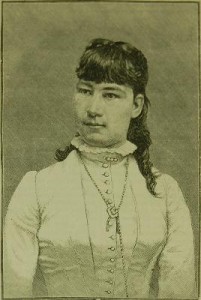
I was adding a book to my pile of ‘get rid ofs’ when I glanced at its name. Strange People by Frank Edwards. I realized right then I couldn’t give away anything with that alluring of title. Even if I’d read it. So, I put it aside. Which means it went into a heap or pile or bottomless pit of ‘stuff’ teetering by the door to my quote unquote, workroom. This mass of mess
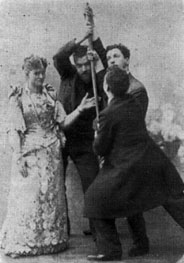
accumulates from any thing and everything out of place or cluttering up the downstairs whether it belongs to me or not. It collapses from time to time and various things come to light I thought lost, thrown away, or have no memory of existing. One day recently, the book tumbled out. Naturally inquisitive, I flicked through the pages, attempting to remember having read anything within. As I began perusing the short chapters, one for each strange person, it didn’t matter if I’d read them before, because they were fascinating right now.
The one I found entirely convincing was of a young 14 year old named Lulu Hurst. One stormy night, poppings and knockings were heard around and about Lulu’s bed. Inexplicable and bizarre, her minister father and respectable mother were appalled by what appeared to be abnormal abilities Lulu possessed. Abilities to throw strong men across a room, lift a heavy man up from the floor, flip backwards three seated men with the touch of a finger on a rod across their chests. Two years, and a whirlwind exhibition tour to various cities, Lulu abruptly retired. The author makes much of scientists, including Alexander Graham Bell, examining her every move and finding no trickery. If I’d not googled her name, just to make sure she was still considered a phenomena, I’d have gone on believing some strange power had taken possession of her, or she was what we call a poltergeist. However, the few lines on the old Wikipedia dismiss her as a magician with some kind of huge trick. She used ‘body mechanics and deflection of force’. Ok. What the hell does that mean? Apparently others understand it because she’s not even a footnote in the weird world. That’s one strange person shot down.
The next story involves a mentalist–yes, just like the one played on TV, only this guy supposedly really solved a murder. He was performing his act on stage when he suddenly pointed to a Canadian mountie audience member and exclaimed that a murdered body would be found by the law man, and he’d be with him when it occurred. By the end of the tale the body is found, the murderer caught, and Professor Gladstone was off on the rest of his vaudevillian tour. What makes these stories interesting, is the time frame of most–within the 20th century–when fakery is more likely to be found if there. This particular incident took place in 1931. I checked online for this guy, and found repeated verbatim, the entire chapter of the book–and in typical fashion, with no source cited. So who really knows if this phenomenon actually took place? It sure would be cool if it did.
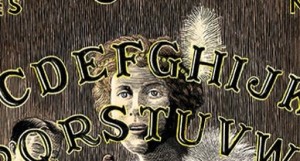
There are plenty of witnesses to the automatic writing of Patience Worth, through her medium, Pearl Curran. In 1913, Mrs. Curran, while playing around with a
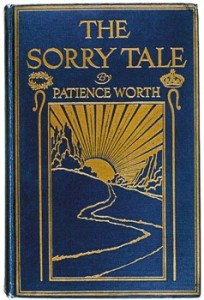
Ouija board, was tapped on the shoulder, figuratively, and I suppose literally, when a woman identifying herself as Patience Worth from England, who journeyed to the US in the 1600s, and was later killed by Indians, (Native Americans get blamed for everything), made novels and poems flow effortlessly forth from Pearl’s lips and fingers. Mr. Curran jotted every visitation down, so records were kept to verify her gift. After researching Patience online, it was made clear to me that the author of Strange People, only accessed those facts that fit the mysterious and unknowable for each example of strange. This fact doesn’t bother me–I still find it extremely odd that someone could pretend to be possessed by a spirit and write 4 novels and many poems that critics of the day considered quite good.
There are the usual ‘freak’ stories of conjoined twins, midgets, etc. The fat man stories are quite sad, and at least one unfortunately true. Robert Earl Hughes was 1500 pounds when he died tragically as a result of complications following a bout of measles. He was too large to be taken to a hospital so had to be treated in the trailer he lived in while on the side show circuit. The other tale, about Johnny Alee circa the 1800s is less verifiable. Too large to leave his home, one day he fell through the floor and as the house was on pegs above the ground, he was stuck by his armpits dangling in the air. He suffocated before the the huge crowd could move him.

Dr. S. Weir Mitchell’s story is less interesting than what I found about him as a respected Philadelphia physician. Eminent in the field of hysterics, Edwardian women had him to thank for the ‘bed rest’ cure. Forced to lay inert in bed for months at a time for supposed mental disturbance, Charlotte Perkins Gilman managed to stay sane by conjuring up a tale she later published as The Yellow Wallpaper. The story is about a woman, quite like her, who while forced to lay alone day after day, slowly loses her sanity while contemplating the vines and pattern of the only thing visible, the wallpaper. Thanks to Weir, Freud developed his misogynistic ideas. But the story in the book has nothing whatsoever to do with the above subject. His is a run of the mill ghost story–he is summoned on a winter’s eve from his bed by a young girl without proper winter clothing to attend to her seriously ill mother. As he examines the ill woman, he notices the girl has vanished, yet her clothes hang in the closet. When he touches them, they are completely dry, an impossibility coming in from the storm. He is informed by the sick woman that those are her daughter’s clothes, and she died two months previously. If Dr. Mitchell related this story to others at the time, I think that would have been cause enough to put him on bed rest, until his
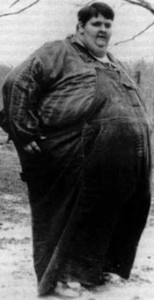
nerves were calm enough for his return to society.
If you can track down a copy of this odd book, I think you’ll find it fun, and in a curious way educational. I certainly learned things I never dreamed existed!
